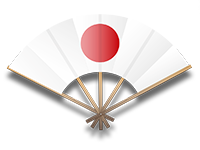About the meaning of Seme and Tame
Clearing my cluttered hardisk I recently fished out this little article by Lorenzo. In its simplicity it is deeply informative and has helped me grasp the difficult and dynamic concepts of seme and tame, reaching deeper at each of the several stages of my kendo development. Within each new level a new set of meanings opens up.
It seems that, on this topic, there is still very little available in English. Therefore, I thought it would be valuable to translate it for the benefit of all those that, like me, are trying to study, experience and master these critical but almost obscure concepts.
Seme? Tame?
By Lorenzo Zago 7th Dan Renshi
Translated by Emmanuele Levi
In the last few years, through ever increasing familiarity Japanese sensei, we have gradually become more acquainted with kendo terms that describe aspects, attitudes and feelings experienced during the execution of an attack. By attack I mean the phase that precedes and follows the execution of the cut. These terms are quite specific and, therefore, complex.
Unfortunately, their “real” meaning often tends to get lost in literal or lazy translations. Other times it is lost to the convenience of focusing only on the exterior meaning, in the arrogant assumption that one understands everything just because this superficial translation encompasses all you like or believe you know already.
These approaches prevent us from understanding the full meaning of these expressions, negating a real opportunity to grow by “experiencing” the term. At the same time they throw us into the total chaos, which often follows the attribution of complex meanings to simple and clear words.
Having now set the scene I would like to focus on two terms in particular: SEME and TAME.
SEME literally means “The state in which an unrelenting, determined position of advantage is maintained on the opponent. For example Kiryoko-ni-yoru-seme (to attack with “fighting spirit”), Ken-sen-ni-yoru-seme (to attack with the sword) and Datotsu-ni-yoru-seme (to attack by hitting)”.
Often, we tend to over simplify by associating seme with its physical manifestation, such as a small step forward with the kensendominating the opponent’s centre. However, this is just the superficial aspect. True it is a convenient foundation from where to start approaching the concept. However, to grow within the experience of our practice, we have to shift the focus to how, when, and where seme is created.
We could say that seme begins within us. It is our determination and our will to express ourselves through the attack we are about to make. It is the propensity to take the initiative (sen), creating a rupture (suki) in the opponent’s mental and/or physical position.
While the tangible expression may vary according to situations and/or the opponent’s technical/physical abilities (manifesting in advancing, moving laterally or backwards, in raising or lowering the kensen, in using harai waza, etc…) the spiritual attitude does not change!
To achieve this it is essential to harmonise with, and empathize with, your sparring partner. Unless the attitude of both kendoka, during practice, focuses on the research and study of this feeling, seme will always be incomplete, restricted to its technical/physical form, resulting in random outcomes (it may or may not succeed, but the reason will always be unclear), as it does not fuses with a strong spirit. Seme must be sought and expressed in its totality, as a whole.
K. Hasegawa Sensei used an expression that I believe gives a very clear meaning to the term: “Seme is like water, a fluid that penetrates into a material permeating it, till it changes its consistency”.
Seme must be present from the start of keiko till the end of an attack and immediately resumed for the next attack.
A recurrent exercise to achieve a correct attitude in the search of seme, is to find, within a single respiratory cycle (inspiration/expiration), one sole opportunity to attack.
TAME literally “The condition of maintaining both mental and physical balance, whilst keeping a spiritually full state, during the creation of a waza”.
Tame is the link between seme and the completion of the attack. When we seme, in order to create a suki in the opponent’s mental and/or physical guard, we will not know, a priori, which opportunity will arise. Although our seme functions to create a specific opportunity, this does not mean that the opponent will respond as intended. It is possible that the opponent will suffer our seme,exposing an opening other than the desired one. If, at this stage, we cannot maintain mental and physical balance and a full spirit we will not be able to adapt to the circumstance that has developed. Thus we risk being surprised ourselves and giving the opponent an opportunity to strike.
Tame is a period of “active waiting”, of observation and assessment. Time suspended in order to unleash the attack with a suitable sutemi.
At this stage the kensen is still aimed at the opponent. Only when the wasa to be executed is clear, can we move-in to strike, in one single motion.
With experience, this phase must gradually become shorter and shorter. That is, the ability to exploit the opportunity must become quite instantaneous.
Also here, as for seme, the ability to “tune-in” with one’s partner is critical.
If we pay attention to our breathing, we realize that at this stage, there occurs a natural suspension (not a halt) of the exhalation. This enables a compression of the abdomen (hara) pre-disposing you for a valid sutemi to effectively complete the attack.
I believe that these few lines can help people understand, or at least rationalise these two concepts. They encompass what all my “current” experience allows me to understand.
Clearly, they cannot substitute for the direct experience one acquires with the constant practice.
Undoubtedly, kendo cannot be separated from the direct experience, from listening to our bodies, mind, and knowledge.
